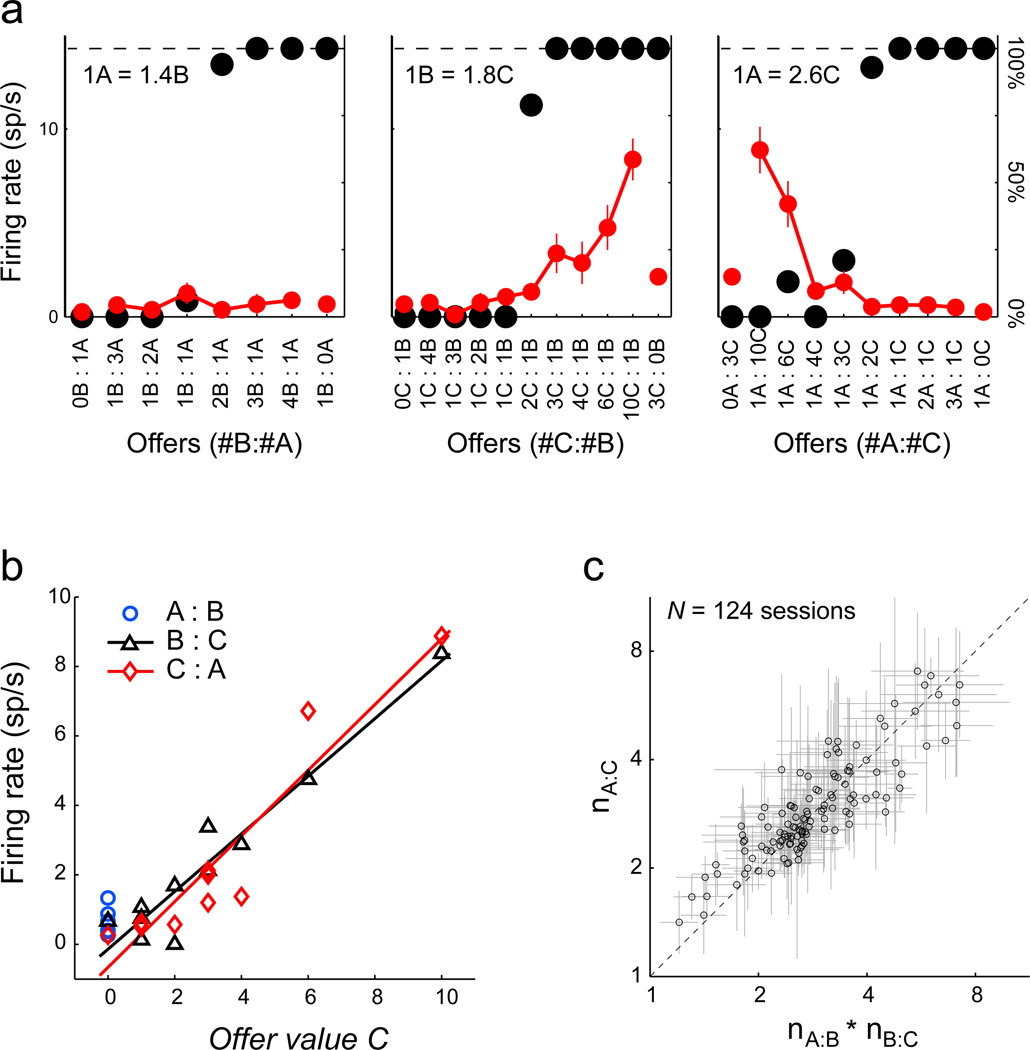Figure 3.
Menu invariance and preference transitivity. a. One neuron encoding the offer value. In this experiment, monkeys chose between 3 juices (A, B and C) offered pairwise. The three panels refer, respectively, to trials A:B, B:C and C:A. In each panel, the x-axis represents different offer types, black circles indicate the behavioral choice pattern and red symbols indicate the neuronal firing rate. This neuron encodes the variable offer value C independently of whether juice C is offered against juice B or juice A. In trials A:B, the cell activity is low and not modulated. b. Linear encoding. Same neuron as in 3a, with the firing rate (y-axis) plotted against the encoded variable (x-axis) separately for different trial types (indicated by different symbols, see legend). c. Value transitivity. For each juice pair X:Y, the relative value nXY is measured from the indifference point. The three relative values satisfy transitivity if (in a statistical sense) nAB * nBC = nAC. In this scatter plot, each circle indicates one session (± s.d.) and the two axes indicate, respectively, nAB * nBC and nAC. Data lie along the identity line, indicating that subjective values measured in this experiment satisfy transitivity. Choices based on a representation of value that is menu invariant are necessarily transitive. Adapted from Padoa-Schioppa and Assad (2008), Nature Neurosci (Nature Publishing Group).

